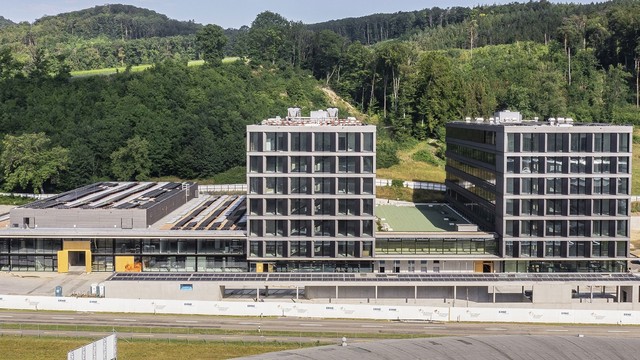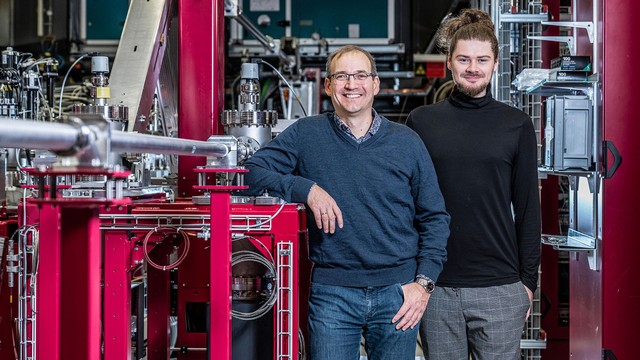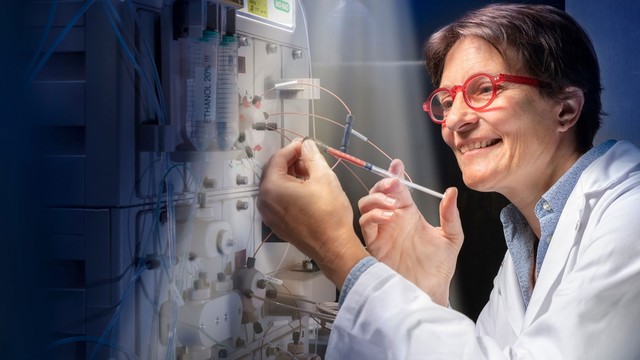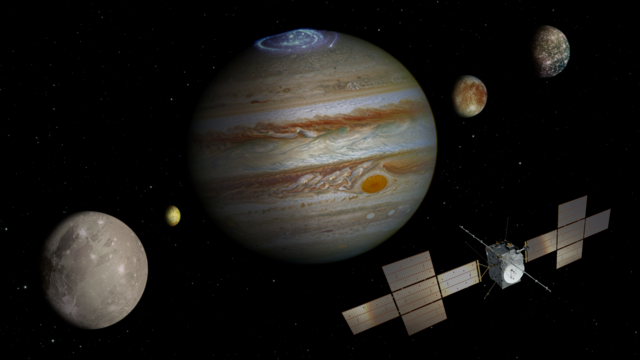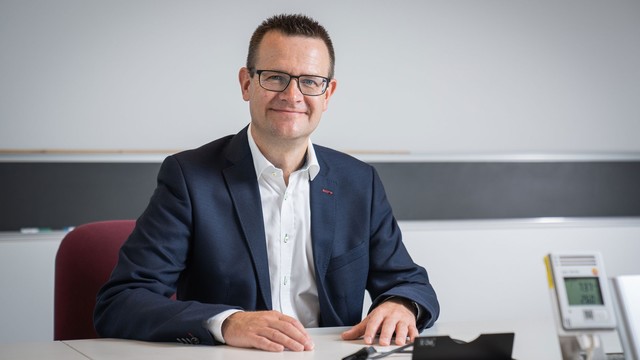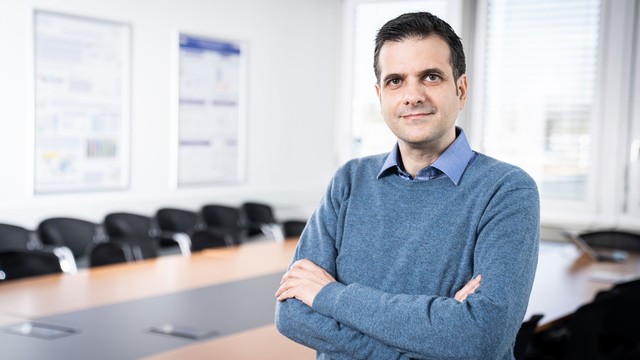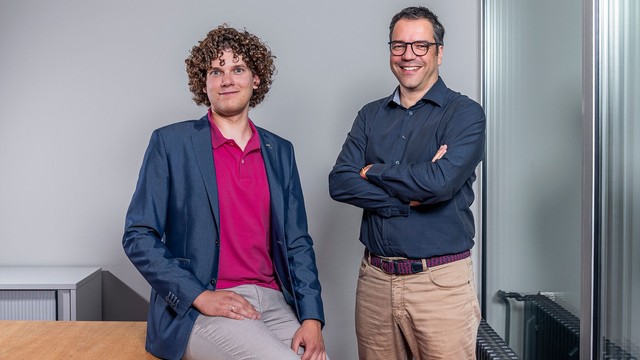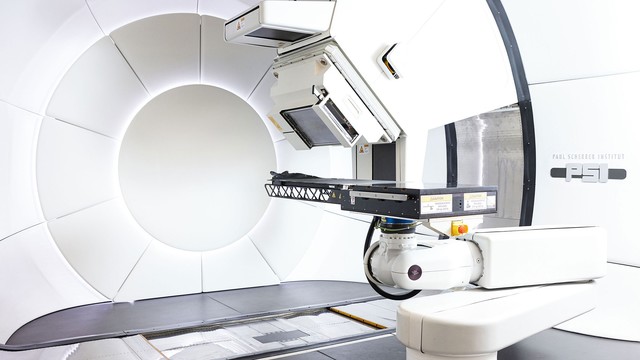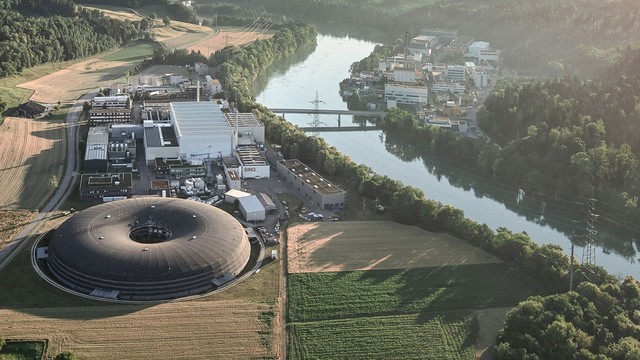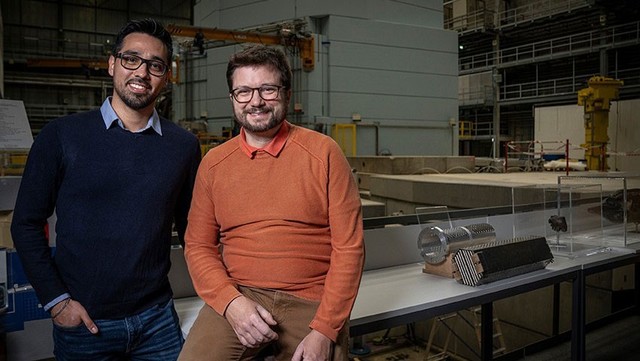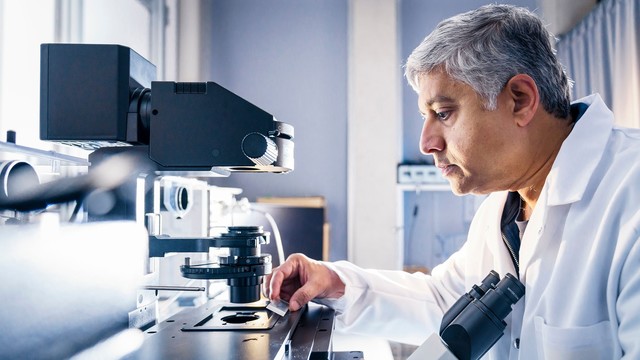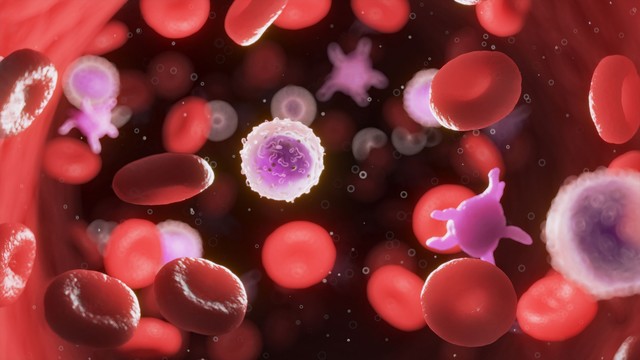Highlights – PSI research in 2023
The fight against cancer took us inside cells, while exploration of our solar system took us out to Jupiter. At PSI in 2023, new collaborations between science and industry were established, thorough research helped pave the way for the energy transition, and again and again the focus was on light. We look back on the past 12 months.
January
PSI’s year began with the founding of the new technology transfer centre Swiss PIC, the Swiss Photonics Integration Centre. It is situated in Park Innovaare and thus in the immediate vicinity of PSI, which is, along with other participants from industry and research, one of the founding partners. Swiss PIC offers the transfer of know-how from academic partners to the photonics industry. The term photonics refers to the use of light to transmit information in so-called photonic integrated circuits (PICs) as well as optical fibres.
Find out more: Swiss PIC to support Swiss photonics industry
February
In February too, light was a topic, but this time in the field of medicine. With the help of the X-ray free-electron laser SwissFEL, PSI researchers were able to produce, in effect, a high-resolution movie of molecules showing how specific active agents can be activated or deactivated with light. The idea is to activate these so-called photopharmaceuticals only where they’re needed in the body, and only for the required duration. In this way, side-effects could be minimised and resistance, for example to antibiotics, could be reduced.
Find out more: Using light to switch drugs on and off
March
The human eye also needs light. We see objects when they reflect light that subsequently strikes our retina. What happens there, at the very start, is something PSI researchers are the first to have examined in real time: The small molecule retinal, a derivative of vitamin A, absorbs part of the incoming light energy and alters its three-dimensional shape. In a fraction of a trillionth of a second it inflates slightly, thus giving itself the freedom to change shape, and starts a cascade of further tiny reactions ultimately enabling us to perceive the incident light.
Find out more: How vision begins
April
On 14 April 2023, an ESA rocket launched towards Jupiter: the start of a mission called JUICE (Jupiter Icy Moons Exporer). Among other things, the mission will search for evidence indicating whether oceans, which might hold the possibility of extraterrestrial life, exist below the ice layers of Jupiter’s moons. One of the many instruments on board is the high-tech detector RADEM (Radiation-hard Electron Monitor), which was developed at PSI. It will provide information about the complex radiation conditions of the Jupiter system, as well as its highly dynamic magnetic environment. In addition, RADEM acts as a sentinel: If it detects dangerously high levels of radiation, the other, more sensitive instruments of the JUICE mission can be switched off and thus protected.
Find out more: Jupiter mission to explore conditions conducive to life
May
Zero greenhouse gas emissions from 2050 on: Switzerland can achieve this ambitious goal if science, business, politics, and society work towards it together. With the newly founded Swiss Centre of Excellence on Net-Zero Emissions (SCENE), more than 30 research laboratories are combining their expertise relating to net-zero emissions in an interdisciplinary manner and across institutional boundaries. All institutions of the ETH Domain are engaged in SCENE: ETH Zurich, EPFL, Empa, WSL, Eawag, and PSI as the leading house.
Find out more: Switzerland’s path to the net-zero target
June
Again in June, PSI demonstrated its strength in research on energy and climate. A new study published in a specialist journal presented the results of an extensive computer simulation of climate, the global economy, and the global energy system. An international research team used a supercomputer to calculate 4,000 scenarios for 15 regions of the world, taking into account possible developments in ten-year increments. The simulation included 72,000 variables and 18 uncertainty factors, such as population and economic growth. Their study now provides a sound basis for a sustainable energy system.
Find out more: 4000 scenarios for a climate turnaround
July
A newly developed method called phase-contrast interferometry could improve early detection of breast cancer in the future. Researchers at PSI, ETH Zurich, the Canton Hospital of Baden, and the University Hospital of Zurich are working together on this. It is a further development of computer tomography, in which the breast tissue is illuminated with X-rays. The new method, however, also evaluates information arising from the refraction and scattering of X-rays in the tissue. In comparison to conventional X-rays, both the resolution and contrast of these images are significantly higher, so that the smallest of objects are easier to identify.
Find out more: Earlier detection of breast cancer
August
On 15 August, a 67-year-old patient with oesophageal cancer became the first person in Switzerland to receive proton therapy for this disease. The irradiation with positively charged particles took place at PSI’s Centre for Proton Therapy, where people with a variety of tumour diseases have been treated since 1984. Treatment of the patient with oesophageal cancer was carried out jointly with the University Hospital of Zurich as part of a European clinical study. This research seeks to determine if proton therapy is suitable for treatment of this type of cancer, since it has the potential to reduce lung complications that often occur with classic radiation treatment.
Find out more: A Swiss premiere Proton radiotherapy to treat oesophageal cancer
September
At 8 a.m. on 30 September, the Swiss Light Source SLS, one of the five large research facilities at PSI, was shut down. For a bit more than a year, SLS will remain out of service for research, while the facility gets a comprehensive renovation: SLS 2.0. In 2025, SLS will go back into operation, better than ever. From then on, it will provide even more intense and better collimated X-ray light than before for cutting-edge scientific experiments. In the future, it will thus be possible to examine more samples in a given amount of time, meaning that more scientific data can be produced in the same time. In many cases, the quantity will increase by a factor of 40.
Find out more: SLS 2.0: “Dark time” during the upgrade
October
Researchers were able to observe what happens inside a battery during the charging and discharging process. X-rays do not penetrate metals, but neutrons do. PSI researchers took advantage of this at the Swiss spallation neutron source SINQ. They combined neutron spectroscopy imaging techniques and neutron attenuation in a new technique that enabled them, for the first time, to visualise even fast processes, such as when the liquid electrolyte in a battery solidifies at low temperatures. The analysis helps to improve understanding of the physical and chemical processes and should aid in the development of batteries with better properties.
Find out more: Better batteries for electric cars
November
Restoring older cells of the body to a youthful, stem cell-like state sounds like a dream. PSI researchers actually managed this, on a laboratory scale, and did it without genetic engineering or chemicals, but rather through purely mechanical stimulation of the cells. The researchers worked with fibroblasts, which are connective tissue cells. They embedded these in a lattice made of protein. The spatial confinement in the lattice brought about a process that restored the fibroblasts, during cell division, to a stem cell-like state. The researchers put these reprogrammed cells into a laboratory model for old, damaged skin tissue and were able to show that this could promote wound healing.
Find out more: Reprogramming tissue mechanically
December
Once more, in December, the focus was on the battle against tumours, this time with a look inside the blood cells. PSI researchers used fluorescence microscopy to examine the so-called chromatin in the cell nucleus. Chromatin is DNA in the nucleus, packed into something resembling a ball of wool. Using artificial intelligence, the researchers evaluated around 200 features of the chromatin in certain blood cells. With an accuracy of 85 percent, they were able to distinguish between the cells of ten healthy and ten diseased people. The method could help to detect tumours at a very early stage and could also be used to closely monitor the course of cancer therapy – two crucial points for a treatment‘s prospects of success.
Find out more: Enabling early detection of cancer
